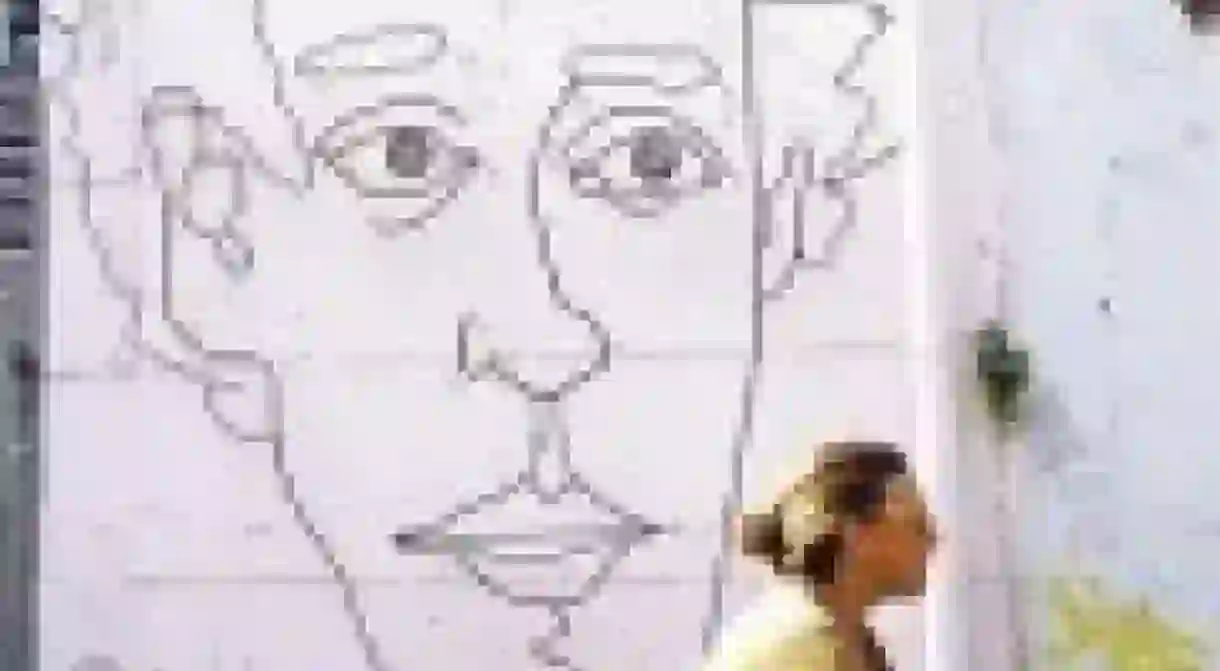Top Things To Do And See In Neve Tzedek

Neve Tzedek is known as a cozy, laid back artistic neighborhood with its quirky architectural style, narrow streets housing galleries, boutiques, cafes, wine bars and upscale restaurants on every corner. It is a sort of an oasis situated between the busy Rothschild Boulevard, Carmel food market, Nachalat Binyamin arts and crafts market and the beach. In fact, Neve Tzedek is translated from Hebrew as ‘An Oasis of Justice.’ It lives and breathes rich heritage as the first official neighborhood of Tel Aviv.

In comparison to many European cities, Tel Aviv is extremely young – this April, Israel’s second largest city will celebrate her 106th birthday. Neve Tzedek was the first official Jewish neighborhood of Tel Aviv, starting out with just a few houses built on the outskirts of the walled city of Jaffa in the last decade of the 19th century. Due to low cost of housing, the neighborhood quickly attracted artists and writers including future Nobel prize laureate Shai Agnon, as well as painter Nachum Gutman.

Before Shai Agnon became a world famous writer depicted on the 50-shekel bill, he rented a room from Shlomo and Rebecca Abulafia, one of the first 45 families to settle in Neve Tzedek.

The window in his room happened to be right opposite the window of Margalit Chelouche, the granddaughter of Aharon Chelouche, the chief landowner in Neve Tzedek and one of the first settlers to build his house here. Their brief romance was met with her family’s disapproval, as the young writer was deemed an inappropriate husband for Margalit.

Neighborhood visitors paying attention to the architecture may notice a striking resemblance between two beautiful houses built across the street from each other right at the beginning of Lilienblum Street (located precisely on 28 & 32 Pines St.). These two houses, called ‘The Twins’, were built by Aaron Chelouche for his two granddaughters, one of whom was Margalit.

Rokach Street
One block away from the twin houses is Rokach Street, named after Shimon Rokach, the head of the community who had the vision and the initiation to build the first Jewish neighborhood outside of Jaffa walls. The Rokach House, where his family used to live, was built in 1887 and now operates as a museum dedicated to that period. It is also the home of Shimon Rokach’s granddaughter, Lea Majaro Mintz, a painter and a sculptor, whose work is focused on defying the notions of ugliness associated with the old age.
The Rokach House, 36 Shimon Rokach St, Tel Aviv, Israel,, 972-3-5168042

Nachum Gutman Museum of Art
Down the street from the Rokach House is the Nachum Gutman Museum of Art. Nachum Gutman was a Russian-born Israeli painter, sculptor, and author, who helped pioneer an Israeli style of painting, moving away from the European influences of his teachers, which he deemed unsuitable for depicting Israeli landscape. His mosaic works are showcased throughout public buildings in Tel Aviv and at the Nachum Gutman Museum of Art.
Nachum Gutman Museum of Art, 21 Shimon Rokach St., Tel Aviv, Israel,, +972-35161970

Suzanne Dellal Centre for Dance and Theater
The culmination of the Neve Tzedek tour is at the beautiful Suzanne Dellal Center for Dance and Theater. The compound features a mural by David Tartakover, depicting the history of the neighborhood, as well as the most prominent figures involved in foundation and development of Neve Tzedek. David Tartakover is an Israeli artist, graphic designer, political activist, and design educator. The Suzanne Dellal Center includes four performance spaces and hosts Israeli and international dance companies all year round. It is also the home of two renowned Israeli dance companies, the Batsheva Dance Company and Inbal Dance Theater, Israel’s first and oldest modern dance company. The grounds on which the Suzanne Dellal Center is built was the site of the first education center in the neighborhood of Neve Tzedek, which included the Yechiely Girls School and the Alliance School for boys, built opposite each other in 1908. The original buildings were renovated and stand here to this day.
Suzanne Dellal Center for Dance and Theater, 5 Yechieli St., Tel Aviv, Israel,, +972-35105657

As the city of Tel Aviv grew around Neve Tzedek in the second half of 20th century, this once historical and cultural center turned into a literal slum and was even slated for demolition. Thankfully, a different fate awaited this beautiful neighborhood and restoration took place instead. Real estate prices skyrocketed, with the neighborhood becoming one of the most coveted places for homeowners in Tel Aviv. Recently, the municipality has approved a series of controversial high-rise construction projects drawing criticism from the local residents.

Nevertheless, the neighborhood’s picturesque and artistic nature with a tad of a bohemian touch is well preserved to this day with restoration projects under way for many of Neve Tzedek’s historical buildings. Artists still frequent neighborhood parks in Neve Tzedek, and with luck, a wandering visitor may even walk into a movie set.
Mara Seidel, tour guide, Tel Aviv. +972-526048369













